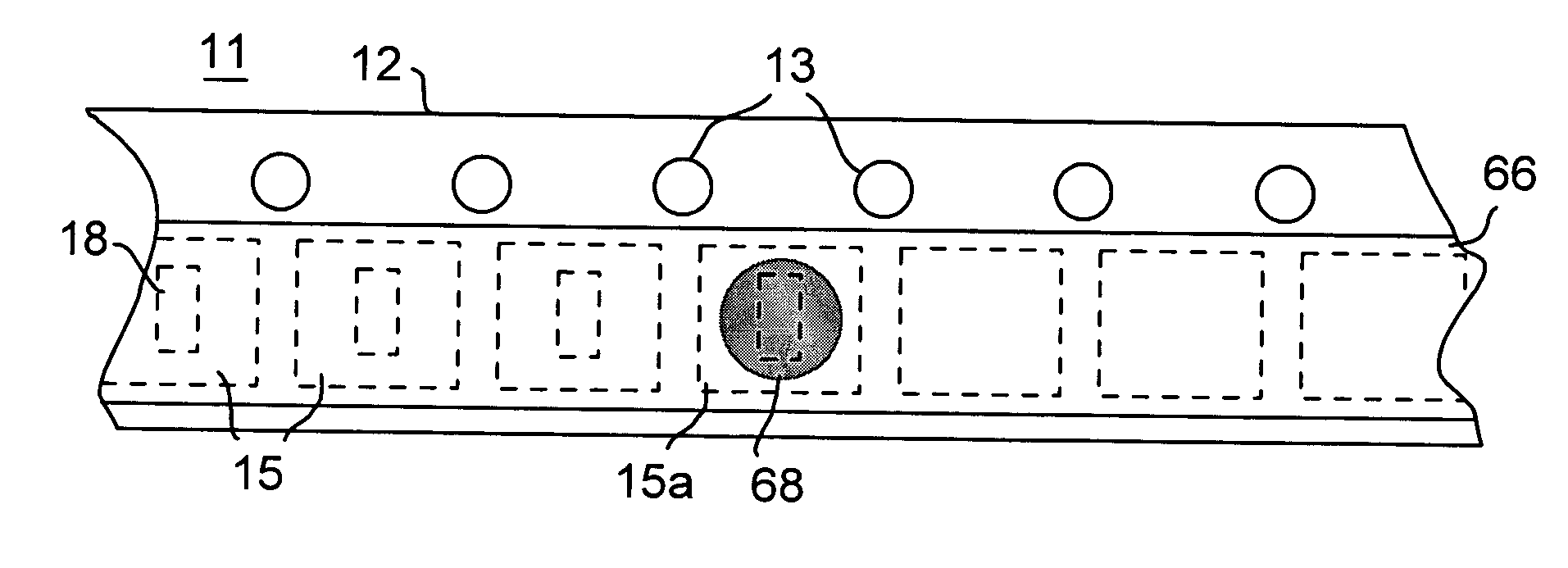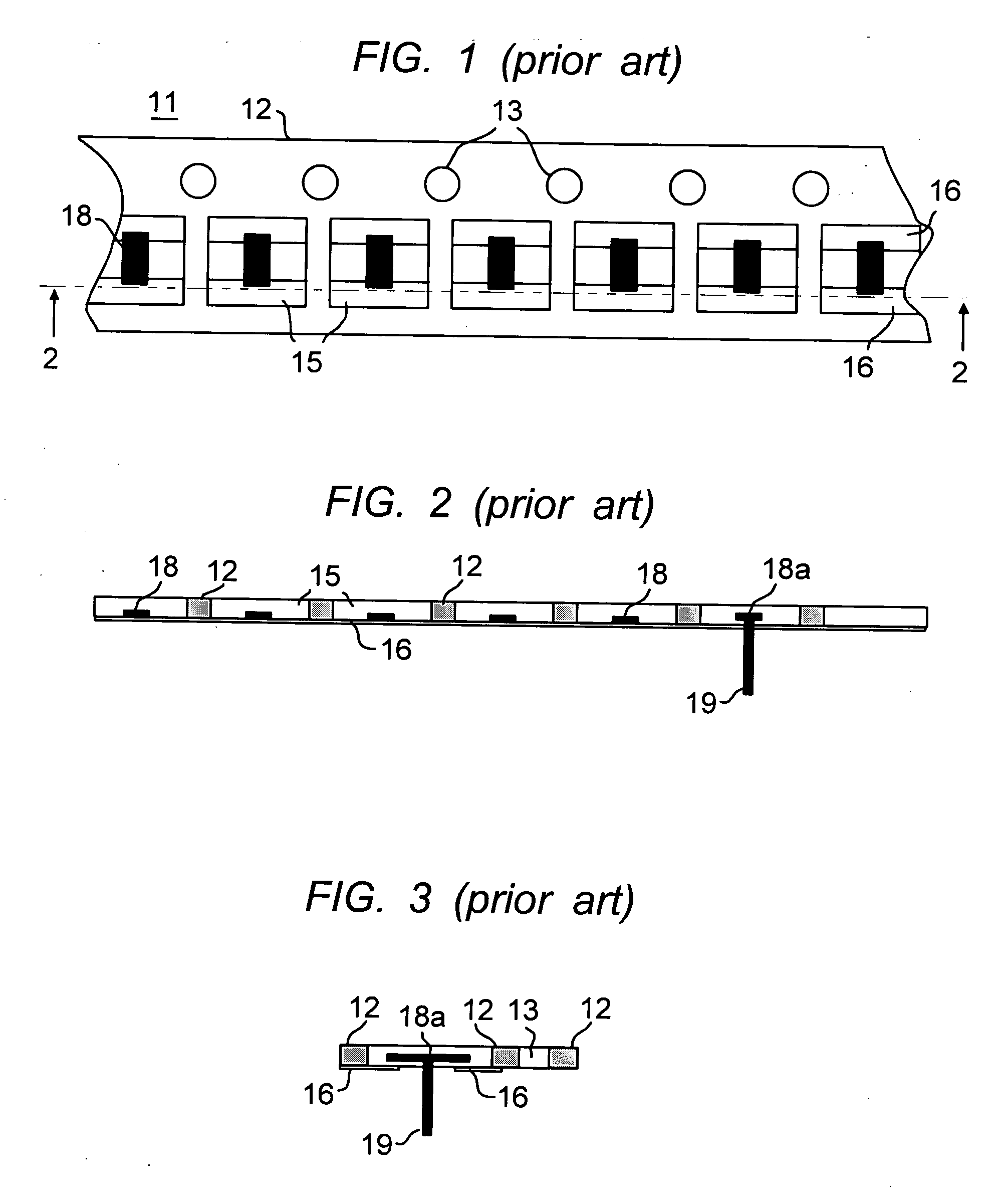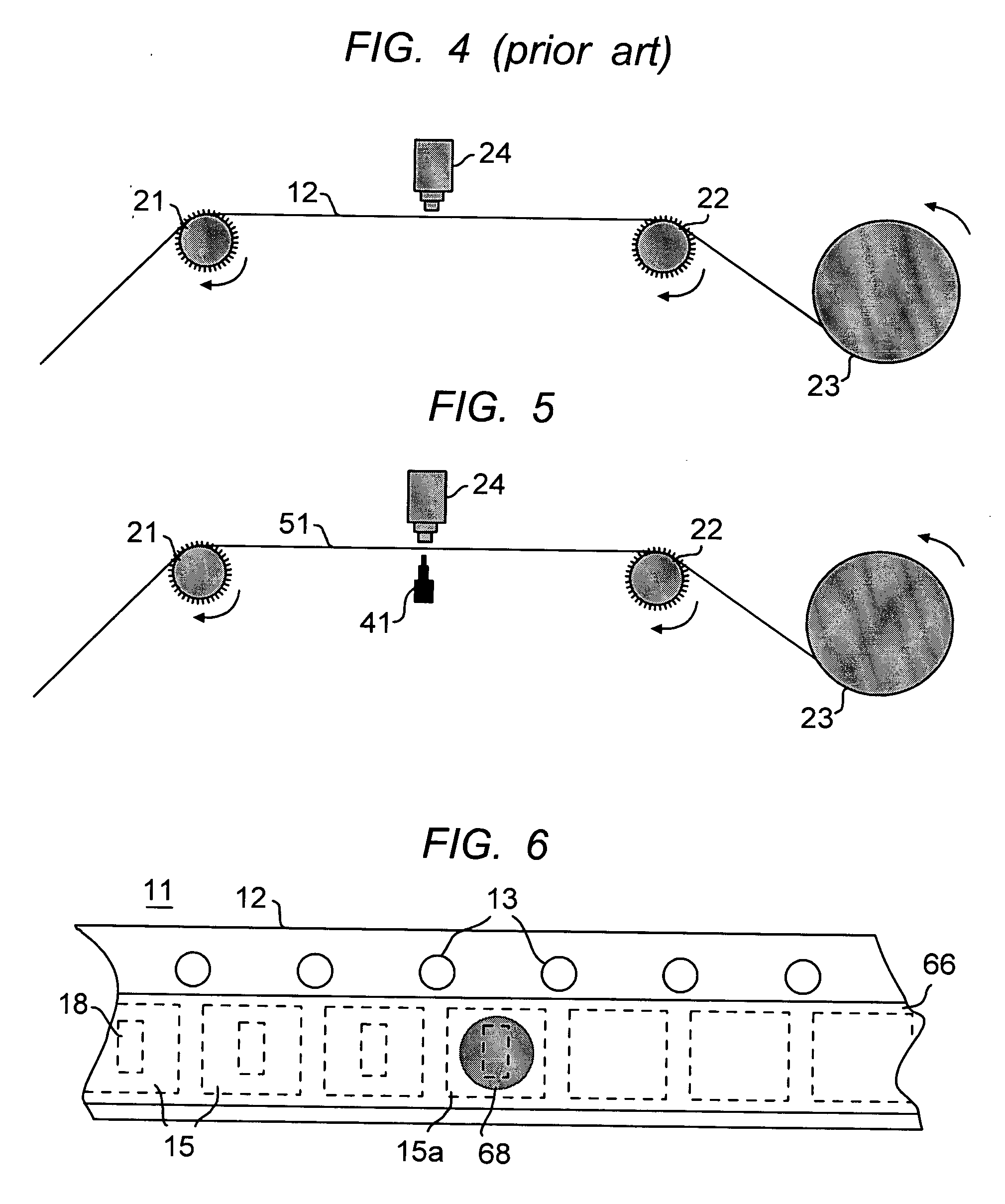Thermal release adhesive-backed carrier tapes
a carrier tape and adhesive-backed technology, applied in the direction of semiconductor devices, electrical equipment, semiconductor/solid-state device details, etc., can solve the problems of difficult automated factories, difficult to pick and place ic chips, and difficult methods for packaging these components for automated handling, etc., to achieve repeatable positioning of components, high precision, and high precision
- Summary
- Abstract
- Description
- Claims
- Application Information
AI Technical Summary
Benefits of technology
Problems solved by technology
Method used
Image
Examples
Embodiment Construction
[0024]With reference to FIG. 1, an adhesive-backed carrier tape is shown generally at 11, comprising a continuous length of flexible punched plastic carrier tape 12, sprocket holes 13 for driving and positioning the tape, carrier tape compartments 15, and the pressure-sensitive adhesive backing tape 16. In this illustration the carrier tape compartments are shown loaded with IC chips 18. As indicated above, IC chips 18 are illustrative only of the kinds of parts and components that can be processed using the carrier tape conveyor system of the invention. The pressure sensitive adhesive tape 16 itself is a relatively thin (e.g. 75 micron) continuous tape that is adhesively affixed to the punched plastic carrier tape frame 12.
[0025]The adhesive-backed carrier tape is shown in cross section in FIG. 2. The carrier tape 12 has a front side (top) and a back side (bottom), with chip site openings extending through the chip carrier tape. The chip site openings have an adhesive backing 16 ex...
PUM
 Login to View More
Login to View More Abstract
Description
Claims
Application Information
 Login to View More
Login to View More - R&D
- Intellectual Property
- Life Sciences
- Materials
- Tech Scout
- Unparalleled Data Quality
- Higher Quality Content
- 60% Fewer Hallucinations
Browse by: Latest US Patents, China's latest patents, Technical Efficacy Thesaurus, Application Domain, Technology Topic, Popular Technical Reports.
© 2025 PatSnap. All rights reserved.Legal|Privacy policy|Modern Slavery Act Transparency Statement|Sitemap|About US| Contact US: help@patsnap.com



